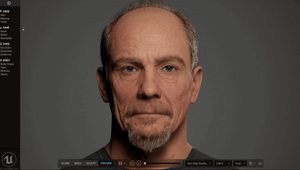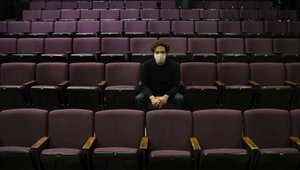
How Extended Reality Can Bring Climate Change Front Of Mind

Photo by Li-An Lim on Unsplash
What does climate change look like? It’s a hard question to answer — not many of us have seen the effects for ourselves. To help combat this, many organisations, charities, and schools are turning to immersive media — virtual reality, augmented reality, mixed reality — to bring the effects of climate change closer to home and ultimately inspire action.
National Geographic
For years, Earth Day has been an occasion for National Geographic to highlight environmental issues including climate change amid its coverage of science, nature, exploration, and world cultures. National Geographic marked the 50th anniversary of Earth Day in April this year, by launching its first augmented reality-enabled cover tied to the event. The aim was to engage smartphone users with educational content that was immersive and interactive to create social media conversations about climate change.
The interactive tool, which was built using Instagram’s Spark AR, allowed anyone on Instagram, not just @natgeo followers, to use it. The AR content offered a cautionary look at climate change, showing what the world might be like in 2070.

Cover of April 2020 issue of National Geographic
Users could see the globe as a 3D model and walk around it as it rotated. The globe showed yellow dots on 12 major cities such as Los Angeles, London, Istanbul, and Chennai, India. Tapping on the dots brought up current climate data for each city, some of which show a line to another city that’s expected to have the same climate in 50 years. For example, LA was connected with Ouezzane Province in Morocco, because by 2070, LA will feel like Morocco does today. Hanoi, the capital of Vietnam, was not connected with any other city, because “by 2070, Hanoi will feel like nowhere else on earth does today”.
Earthwatch Europe
An augmented reality experience initiated by environmental charity Earthwatch Europe allows users to tackle the challenge of protecting a city from the effects of the climate crisis — flooding and heatwaves — using natural resources such as trees, lakes, and green roofs.
Maria Pontes, director of programmes and partnerships at Earthwatch Europe, told RIBAJ: “There’s still very little general understanding of the power of these types of solutions in urban environments, including what they are, how they work and why they’re important. As an environmental education organisation, we needed to do something about it and AR is an innovative, fun and engaging way to communicate with people.”
Developed in collaboration with Atticus Digital, the tablet-based experience builds on Earthwatch’s scientific research into nature-based solutions in 17 major cities across nine countries.

EARTHWATCH EUROPE
Virtual Planet
Virtual Planet is helping to combat climate change by getting people to experience it. Juliano Calil, the co-founder of Virtual Planet and a climate researcher at the Middlebury Institute of International Studies, is immersing communities in the environmental consequences of climate change.
Using drone photography, Calil and his team take thousands of photos of any given territory, environment, or property, and from there they create 3D models. The effects of climate change — for example, rising sea level — are then applied. These images are then presented to local residents in virtual reality.
Future versions of the simulations, Calil says, will also integrate proposed solutions. If a community is considering building a sea wall, for example, “we can show the sea wall and look at the impacts to the beach,” he says. “You have a sea wall, but over time, you may lose the beach.”
Be Earth #13
Earlier this year at the World Economic Forum (WEF) annual meeting in Switzerland, a new VR experience titled Be Earth #13 was unveiled to teach users more about climate change. The free experience is a collaboration between Oculus, the United Nations, XR Impact and the Swedish International Development Agency (Sida).
Be Earth #13 takes the user to the Amazon rainforest in the aftermath of wildfires. The experience invites participants to embody earth and learn more about climate change, to take action and personal responsibility to help end global warming.
The title of the experience refers to the 17 UN Sustainable Development Goals, the 13th of which refers to “Climate Action”. The end objective is a virtual reality platform with experiences for each of the 17 UN goals.
The experience was available for demonstration at the WEF conference from 21st-24th January 2020, and will eventually be released to the public.

Xennial Digital
Xennial Digital is an extended reality (XR) company that creates meaningful digital experiences for K12 (for kindergarten to 12th grade) students. It is the recipient of Magic Leap’s Independent Creator Grant and creator of the Climate Change app available on Magic Leap World.
The company wants to arm students with knowledge so they can become agents of change. But, importantly, make the experience of gaining knowledge enjoyable and memorable.
The app explores different predictions of climate change over the next 100 years — from optimistic to a nightmare — across five key data points: ice fraction, precipitation, air temperature, ocean temperature, and sea-level rise.
Xennial worked closely with the University of Miami Division of Meteorology & Physical Oceanography, which provided the data sets (which span 100 years) and validated the models as the team built the application.
The Anthropocene Education Program
This programme is a partnership between The Royal Canadian Geographical Society (RCGS) and The Anthropocene Project (TAP). It is a visually stunning and thought-provoking collection of film, art, and virtual and augmented reality. The program paints a stark picture of how people have impacted the climate and environment and was designed to provoke change in the habits of future generations.
RCGS chief operating officer and publisher Gilles Gagnier said: “With these tools, teachers can encourage students to see global environmental issues as relevant to their own lives since academic content is embedded in the accompanying activities and lessons which are designed to develop an intrinsic interest in learning about the planet and promoting positive action.”
The educational program gives teachers across Canada access to state-of-the-art VR, educational short films, online interactive photos, AR experiences, and more, so students can learn about the planet through impactful content. The Anthropocene Education Program includes a curriculum-linked teacher’s guide and lesson plans and will end up in more than 25,000 classrooms across Canada.










